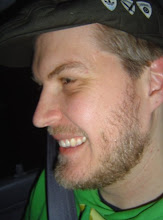Os Gêmeos
Os Gêmeos (Portuguese for The Twins) are graffiti artist identical twin brothers from São Paulo, Brazil, whose real names are Otavio and Gustavo Pandolfo. They started painting graffiti in 1987 and gradually became a main influence in the local scene, helping to define Brazil's own style. Their work often features yellow-skinned characters, but is otherwise diverse and ranges from tags to complicated murals. Subjects range from family portraits to commentary on São Paulo's social and political circumstances, as well as Brazilian folklore. Their graffiti style was influenced by both traditional hip hop style and the Brazilian pichação movement.



KAWS
Brian Donnelly, aka “KAWS”, manifested himself for the first time in the early 1990s by painting walls and writing graffiti in and around Jersey City and New York. In the mid-1990s, he began appropriating advertisements from bus shelters and phone booths in New York City and painting a graphic, cartoon-like skull-and-crossbones image into them. He continued to develop this motif for the next few years, re-working advertising materials not only in bus shelters and phone booths in New York City, but in Paris, London, Berlin, and Tokyo. This work has been featured in numerous publications, as well as exhibited at Colette, Paris, PARCO Gallery, Tokyo, MU Art Foundation, the Netherlands, as well as at BAPE Gallery, Tokyo. His recent work has been influenced by iconic characters from modern pop culture, such as Mickey Mouse, “The Michelin Man”, and The Simpsons. KAWS’ work treads the fine line between art, commerce, cartoons, and commercials. It is a disruption of, as well as a tribute to, all objects produced, bought, sold, exchanged, desired, and cherished. KAWS studied at The School of Visual Arts in New York City, and currently lives in Brooklyn.



José Parlá
José Parlá currently lives and works in New York, and only recently traveled to Cuba for the first time. His life, like his work, is therefore at once extremely particular and generally reflective of the wanderings of today's urban populations. In the context of these migrations and upheavals, Parlá is concerned with the way that cities function as palimpsests, upon which the experiences of those who pass through them are materially inscribed in decay, in writing, in the well-worn paths of their inhabitants. Parlá's work attempts to extract and synthesize fragments of these urban environments in flux and reproduce them using the materials and methods of architectural construction: cement, wood, vinyl as well as those of traditional art like paper, paint, powdered dye, wax, and ink. Yet because these fragments are inflected by the memories and experience of the artist, he considers them to be paintings in sense that is probably truer than one that refers merely to the physical presence of pigments and oil. Parlá describes the object of his method as segmented realities or memory documents. Leading these ideas to form a personal philosophy of his work he calls Contemporary Palimpsests. Each painting bears the name of the location or experience from which it draws its source.
José's artist statement probably best defines his work, "My work is inspired by the anonymous art found in the streets. The art is often in the form of calligraphy or the actions of torn and stripped posters. The inscriptions in my work are used as a form of drawing, and to maintain a record of my observations.
In my travels I have encountered a similar dialogue that takes place in most cities. I find compositions on surfaces of deteriorated walls, and remnants of construction markings. In my paintings I create layers and textures representing the age of memories collected through different periods of my life.
Evidence is left on walls by fleeting creators both aware of their message, or oblivious to what I may find in their signs. Still, they remain mostly unidentified.
When working on my paintings I imagine different people are making choices to write, paint, or destroy the surfaces. To do this I employ techniques to age my work, adopting materials normally used in construction.
I am using my imagination to capture the psychology of a segmented reality. These realities which are deposited into our subconscious everyday are the basis for a dialogue that goes mostly unnoticed. Once these "segmented realities" or images are transferred and converted into paintings they become a "memory document" , a sort of time capsule for my experience in history.
With this language I hope to communicate and provoke thoughts of the past and present conditions in the human spirit."




No comments:
Post a Comment